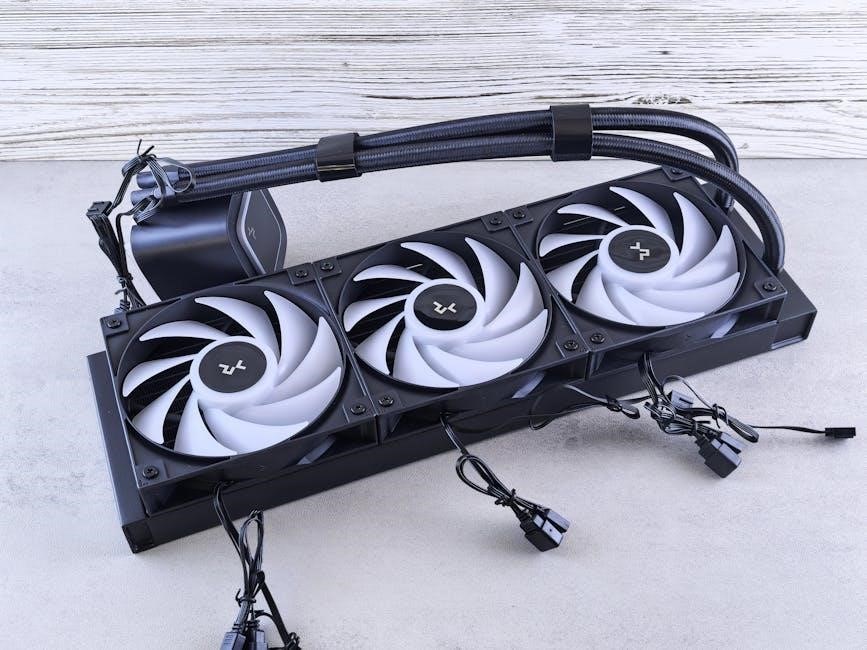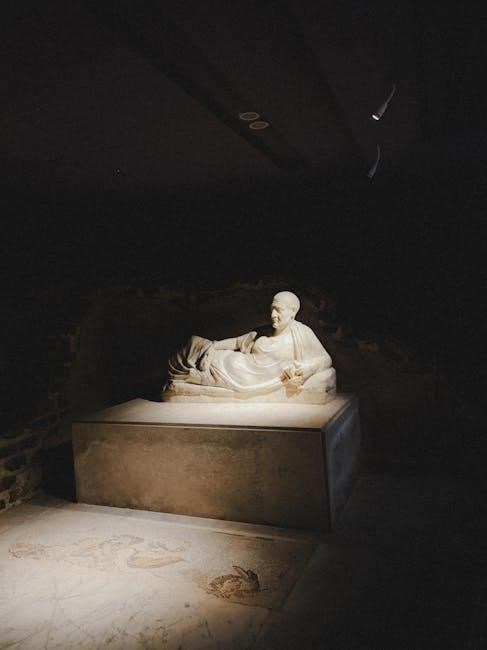Welcome to the Simpson Pressure Washer manual. This guide provides essential information for safe and effective use, covering setup, operation, and maintenance. Read carefully for optimal performance and safety.
Purpose of the Manual
This manual is designed to provide comprehensive guidance for the safe and effective use of your Simpson pressure washer. It covers essential information, including setup, operation, maintenance, and troubleshooting. The purpose is to ensure users understand the product’s capabilities, limitations, and proper handling to maximize performance and longevity. By following the instructions, you can achieve optimal cleaning results while minimizing risks. This guide is intended for both new and experienced users, serving as a reference for mastering the pressure washer’s functions. It emphasizes safety, proper techniques, and routine care to help you get the most out of your investment. Always refer to this manual before operating the pressure washer to ensure safe and efficient use.
Key Features of the Simpson Pressure Washer
Your Simpson pressure washer is equipped with powerful features designed for efficient cleaning. It boasts high PSI and GPM ratings, ensuring strong cleaning power for tough tasks. The durable construction includes a robust frame and long-lasting components. The pressure washer features an easy-to-use interface with adjustable nozzles for various cleaning needs. It also includes safety features like automatic shut-off and thermal protection. The compact design allows for easy mobility and storage. With its versatile capabilities, the Simpson pressure washer is ideal for cleaning driveways, decks, vehicles, and more. These features combine to deliver a reliable and high-performance cleaning experience, making it a valuable tool for both residential and light commercial use.
Important Safety Information
Warning: Always read and follow the instructions in this manual before operating your Simpson pressure washer. Wear protective gear, including goggles and closed-toe shoes, to prevent injury. Keep children and pets away while operating the unit. Never aim the nozzle at people, animals, or electrical components. Avoid using the pressure washer near open flames or sparks, and ensure the area is well-ventilated. Do not use the washer in enclosed spaces without proper ventilation. Be cautious of high-pressure streams, which can cause lacerations. Use only approved nozzles and accessories to avoid damage or malfunction. Regularly inspect hoses and connections for wear or damage. Failure to follow safety guidelines may result in serious injury or equipment damage.

Safety Guidelines and Precautions
Adhere to safety guidelines to prevent accidents. Always wear protective gear, avoid aiming nozzles at people or electrical components, and ensure proper ventilation. Regularly inspect equipment for damage.
General Safety Precautions

Always prioritize safety when operating the Simpson pressure washer. Wear protective eyewear, gloves, and closed-toe shoes to prevent injury from debris or high-pressure streams. Ensure the area is clear of bystanders, especially children and pets. Never aim the nozzle at people, animals, or electrical components. Keep the pressure washer on a stable, level surface to avoid tipping. Use the correct nozzle for the task to maintain control and avoid accidental spray. Regularly inspect hoses and connections for damage or leaks. Avoid using the pressure washer in wet conditions or while standing on unstable ground. Keep the unit away from open flames or sparks. Always follow the manufacturer’s instructions for assembly, operation, and maintenance to ensure safe and effective use.
Specific Warnings and Cautions
Never cover the pressure washer during operation to avoid overheating. Avoid touching or blocking the nozzle’s pinhole, as it can cause serious injury. Do not modify or alter the equipment, as this may void the warranty and create safety hazards. Always follow the engine manufacturer’s instructions for gas-powered models. Never use the pressure washer near open flames or sparks, as it may ignite flammable materials. Avoid spraying delicate surfaces like glass or soft materials, as high pressure can cause damage. Do not operate the unit in wet conditions or while standing on an unstable surface. Keep children and pets away during operation. Never use damaged or worn-out nozzles, as they can malfunction and cause accidents. Always turn off the engine and allow it to cool before performing maintenance or repairs. Unauthorized repairs may lead to malfunctions or safety risks.
Protective Equipment Recommendations
To ensure safe operation, always wear appropriate protective gear. Safety glasses or goggles are essential to protect your eyes from debris and high-pressure spray. Wear durable gloves to maintain a firm grip on the spray gun and prevent slipping. Closed-toe footwear is recommended to protect feet from heavy objects or accidental spray. Avoid loose clothing that could get caught in moving parts. Hearing protection, such as earplugs, is advised due to the loud engine noise. Keep long hair tied back to avoid entanglement. Ensure all protective equipment is in good condition and suitable for the task at hand. Proper gear reduces the risk of injury and enhances control while operating the pressure washer;

Initial Setup and Assembly
Begin by carefully unboxing and inspecting the pressure washer for damage. Attach the hose and nozzle securely, ensuring all connections are tight. Prepare the engine or motor according to the manual’s instructions. Always refer to the detailed assembly guide provided for specific steps and precautions to ensure proper setup and functionality.
Unboxing and Inspecting the Pressure Washer
Begin by carefully unboxing the pressure washer and inspecting all components for damage or wear. Check the hose, nozzle, and engine or motor for any signs of shipping damage. Ensure all parts, including the gun, wand, and detergent tank, are included and undamaged. Refer to the parts list in the manual to verify completeness. Inspect the hose for kinks or abrasions and ensure all connections are secure. If any damage is found, contact customer support immediately. This step ensures your pressure washer is ready for safe assembly and operation. Always follow the manual’s guidance for proper inspection and handling of components.
Attaching the Hose and Nozzle
Attach the high-pressure hose to the pump and gun securely, ensuring all connections are tight. Use Teflon tape on threaded fittings for a leak-free seal. Next, connect the spray nozzle to the wand, ensuring it clicks into place. For different cleaning tasks, select the appropriate nozzle tip and attach it firmly. Always refer to the manual for specific torque values to avoid over-tightening, which could damage threads. Properly secured connections are crucial for safe operation and optimal performance. If unsure, consult the manual or contact support for guidance. This step ensures your pressure washer is assembled correctly and ready for use.
Preparing the Engine or Motor
Before first use, ensure the engine or motor is properly prepared. For gas-powered models, check the oil level and fill with the recommended oil type, as specified in the manual. Ensure the fuel tank is filled with fresh, unleaded gasoline. For electric models, verify all electrical connections are secure and the power cord is undamaged. Always refer to the engine or motor section of the manual for specific instructions. Check for any loose belts or connections and tighten as needed. Prime the engine if required, following the manufacturer’s guidelines. Ensure the area is well-ventilated and clear of flammable materials. Proper preparation ensures smooth operation and extends the lifespan of your pressure washer. Follow all safety precautions to avoid accidental start-ups or injuries.

Operating the Pressure Washer
Start the engine or motor, adjust the spray nozzle, and use the correct techniques for effective cleaning. Always follow safety guidelines and manufacturer instructions for optimal performance.
Starting the Engine or Motor
To start the engine or motor of your Simpson pressure washer, ensure the unit is on a level surface and all safety precautions are in place. For gas-powered models, check the fuel and oil levels, ensuring they are at the recommended levels. Pull the choke (if applicable) and grasp the starter handle firmly. Pull the handle in one swift motion until the engine roars to life. For electric models, plug in the unit, ensure the power switch is in the “off” position, then turn it on. Always refer to the specific instructions in your manual for detailed starting procedures. Wearing protective gear, such as gloves and safety glasses, is highly recommended during startup.
Using the Spray Nozzle and Adjusting Pressure
Using the spray nozzle and adjusting pressure on your Simpson pressure washer is crucial for effective cleaning. Begin by selecting the appropriate nozzle tip for your task, as different tips provide varying spray angles and pressures. Attach the nozzle securely to the wand to ensure proper operation. To adjust pressure, use the regulator on the unit, turning it clockwise to increase pressure and counterclockwise to decrease it. Always start with a lower pressure setting and gradually increase as needed. Monitor the pressure gauge to avoid exceeding recommended levels. For optimal results, maintain a consistent distance from the surface being cleaned and keep the nozzle moving to prevent damage. Refer to your manual for specific pressure recommendations for different surfaces.
Basic Cleaning Techniques
Start by selecting the right nozzle tip for the job, ensuring it’s securely attached to the wand. Begin cleaning at a low pressure setting, gradually increasing as needed. Maintain a consistent distance from the surface, typically 12-24 inches, to avoid damage. Use broad, sweeping motions, keeping the nozzle moving to prevent concentrated pressure on one spot. For general cleaning, a wide fan tip is ideal, while a narrow tip is better for tough stains. Divide large areas into sections for even cleaning. Avoid using the pressure washer at an angle or tilting it upward, as this can reduce effectiveness. For delicate surfaces, use a low-pressure setting and a wide nozzle. Always test a small area first to ensure the pressure won’t damage the material. Refer to your manual for surface-specific cleaning recommendations.

Maintenance and Upkeep
Regularly clean the machine, inspect hoses for damage, and check oil levels. Store the pressure washer in a dry, protected area during off-seasons. Winterize properly for freezing temperatures.
Regular Cleaning and Inspection
Regular cleaning and inspection are crucial for maintaining your Simpson pressure washer’s performance and longevity. Start by wiping down the exterior with a soft cloth to remove dirt and debris. Check hoses and connections for signs of wear, cracks, or leaks. Lubricate moving parts, such as the spray wand and nozzle, to ensure smooth operation. Drain and flush the pump after each use to prevent mineral buildup. Inspect the filter and clean or replace it as needed. Regularly check the oil level in gas-powered models and top it off if necessary. Always refer to the manual for specific cleaning solutions and lubricants recommended by the manufacturer. A well-maintained pressure washer will deliver consistent results and reduce the risk of costly repairs.
Storing the Pressure Washer
Proper storage of your Simpson pressure washer is essential to maintain its performance and longevity. After use, drain the pump and hoses to prevent water from freezing or causing damage. Store the unit in a dry, well-ventilated area, away from direct sunlight and extreme temperatures. Avoid leaving the pressure washer outdoors during winter months, as cold weather can damage components. Secure loose parts, such as hoses and nozzles, to prevent loss or damage. Before storing, inspect the equipment for any signs of wear or damage and address them promptly. Always refer to the manual for specific storage recommendations tailored to your model. Proper storage ensures your pressure washer remains in optimal condition for future use.
Winterization Tips
Winterizing your Simpson pressure washer is crucial to protect it from cold-weather damage. Start by draining all water from the pump, hoses, and spray gun to prevent freezing. Use a pump saver or RV antifreeze rated for pressure washers to protect internal components. For gas-powered models, stabilize the fuel by either draining the tank or adding a fuel stabilizer. Store the unit in a dry, insulated area away from direct exposure to cold temperatures. Cover the pressure washer to shield it from dust and pests. Before storage, inspect all parts for damage and address any issues promptly. Proper winterization ensures your pressure washer remains functional and ready for use when spring arrives.

Troubleshooting Common Issues
Identify and resolve common problems with your Simpson pressure washer. Check for issues like low pressure, engine malfunction, or hose kinks. Refer to the manual for guidance on diagnosing and fixing issues. Always follow safety protocols and seek professional help if problems persist. Regular maintenance can prevent many common issues. Keep this guide handy for quick solutions to ensure optimal performance and longevity of your pressure washer.
Engine or Motor Problems
Engine or motor issues are common and can often be resolved with basic troubleshooting. If the engine fails to start, check the fuel level, air filter, and spark plug. Ensure the choke is functioning properly and that there are no blockages in the fuel line. Overheating can cause the engine to shut down; allow it to cool before restarting; For electric motors, verify power supply and check for tripped circuit breakers. Low power output may indicate worn pistons or faulty valves. Regular oil changes and filter maintenance can prevent many issues. If problems persist, consult the manual or contact a certified technician. Always follow safety guidelines when handling engine repairs to avoid injury or further damage.
Low Pressure or Flow Issues
Low pressure or flow issues can hinder cleaning efficiency. Check for kinked or blocked hoses, which restrict water flow. Ensure the nozzle is clean and free from debris, as clogs can reduce pressure. Verify that the water supply is adequate, with a functioning inlet screen. A worn-out or damaged seal in the pump may also cause low pressure. Regularly inspect and replace worn components. If using an electric model, ensure the power supply meets the unit’s requirements. For gas models, check the fuel level and air filter. Consult the manual for specific troubleshooting steps or contact support if issues persist. Addressing these problems promptly will restore optimal performance and extend the life of your pressure washer;
Hose or Nozzle Malfunction
A malfunctioning hose or nozzle can disrupt cleaning tasks. Inspect the hose for kinks, twists, or damage, which can restrict water flow. Check for blockages in the nozzle orifice, often caused by dirt or debris. Clean the nozzle with a small brush or stiff wire to restore flow. If the hose is damaged, replace it with a compatible Simpson part. Ensure the nozzle is securely attached to the gun to maintain proper pressure. Regularly inspect O-rings and gaskets for wear, as leaks can reduce performance. Addressing these issues promptly will ensure consistent pressure and flow, optimizing your cleaning experience. Always refer to the manual for specific replacement procedures or contact support for assistance.

Warranty and Support Information
Your Simpson pressure washer is backed by a comprehensive warranty. For details, visit the official website or contact customer support. Troubleshooting guides are also available online.
Understanding the Warranty Coverage
Your Simpson pressure washer is protected by a comprehensive warranty program designed to ensure peace of mind. The warranty covers manufacturing defects in materials and workmanship for a specified period. For detailed terms and conditions, visit the official Simpson website or refer to the warranty section in this manual. Coverage typically includes repairs or replacements for faulty components, excluding wear and tear or misuse. To maintain warranty validity, follow all usage and maintenance guidelines outlined in this manual. For any warranty-related inquiries or claims, contact Simpson’s customer support team directly. Always keep your proof of purchase handy for warranty verification. Troubleshooting guides and repair options are also available online to help resolve common issues efficiently.

Contacting Customer Support
For assistance with your Simpson pressure washer, contact customer support directly via phone or email. Visit the official Simpson website for detailed contact information. Support is available to address inquiries, troubleshooting, and warranty claims. When reaching out, have your product model number and purchase date ready for faster service. Simpson’s team is dedicated to providing timely and effective solutions to ensure your pressure washer operates at peak performance. For urgent issues, phone support is recommended, while email is ideal for less critical matters. Additionally, online resources, including FAQs and user forums, offer helpful guidance and solutions to common problems. Regularly check the Simpson website for updates and new support materials to maximize your user experience.
Ordering Replacement Parts
To maintain your Simpson pressure washer’s performance, genuine replacement parts are essential. Visit the official Simpson website or authorized dealers to find the correct components for your model. Use the parts lookup tool on the website by entering your pressure washer’s model number, found in the owner’s manual or on the product label. Ensure accuracy by double-checking the model number before placing an order. For assistance, contact Simpson’s customer support team via phone or email. Purchasing from authorized sources guarantees authenticity and compatibility. Keep your pressure washer functioning optimally by using genuine Simpson parts, ensuring safety and reliability. Always verify part numbers and descriptions before finalizing your purchase to avoid delays or errors.

Additional Resources
Access online manuals, troubleshooting guides, and FAQs for your Simpson pressure washer. Visit the official website or community forums for tips and support from experienced users.
Online Manuals and Guides
Access comprehensive online manuals and guides for your Simpson pressure washer on the official website or platforms like ManualsLib. These resources provide detailed instructions, troubleshooting tips, and FAQs to help you master your equipment. Download PDF versions for offline use or refer to digital copies for quick access. Additionally, community forums and user-generated content offer valuable insights and solutions from experienced owners. Use these resources to resolve issues, learn maintenance tips, and optimize performance. Always ensure you’re referencing the correct model-specific manual for accurate information. These online tools are indispensable for keeping your pressure washer in top condition and addressing any challenges you may encounter during use.
FAQs and User Forums
Explore frequently asked questions and user forums for your Simpson pressure washer to find solutions to common issues and tips for optimal use. The official Simpson website and platforms like ManualsLib offer extensive FAQ sections covering topics like troubleshooting, maintenance, and operation. User forums provide valuable insights from experienced owners, sharing tips and solutions for specific models. These resources help address concerns such as low pressure, nozzle malfunctions, and winterization. Engage with the community to resolve issues quickly and improve your pressure washing experience. Additionally, customer support teams often monitor forums, offering expert advice. These platforms are a great way to connect with other users and ensure you get the most out of your Simpson pressure washer.
Final Tips for Optimal Performance
To ensure your Simpson Pressure Washer performs at its best, always follow the recommended maintenance schedule and store it properly after use. Regularly inspect hoses and nozzles for damage, and replace worn parts promptly. Use the correct nozzle for the job to avoid unnecessary wear on the equipment. For tough cleaning tasks, consider using a detergent specifically designed for pressure washers. Keep the water supply clean and free from debris to maintain consistent pressure. Finally, refer to the manual for specific guidance on winterization and long-term storage to extend the life of your pressure washer.
Encouragement to Follow Safety Guidelines
Following the safety guidelines in this manual is crucial for protecting yourself and others while using the Simpson Pressure Washer. Always wear protective gear, including gloves and safety glasses, to prevent injury from debris or spray. Keep children and pets away during operation, as the high-pressure spray can cause harm. Never touch hot surfaces or attempt to modify the equipment without proper knowledge. Regularly inspect hoses and connections for damage to avoid leaks or malfunctions. By adhering to these guidelines, you ensure a safe and effective cleaning experience. Remember, safety is your top priority when operating power equipment. Always consult the manual for specific precautions and best practices before starting your tasks.






























